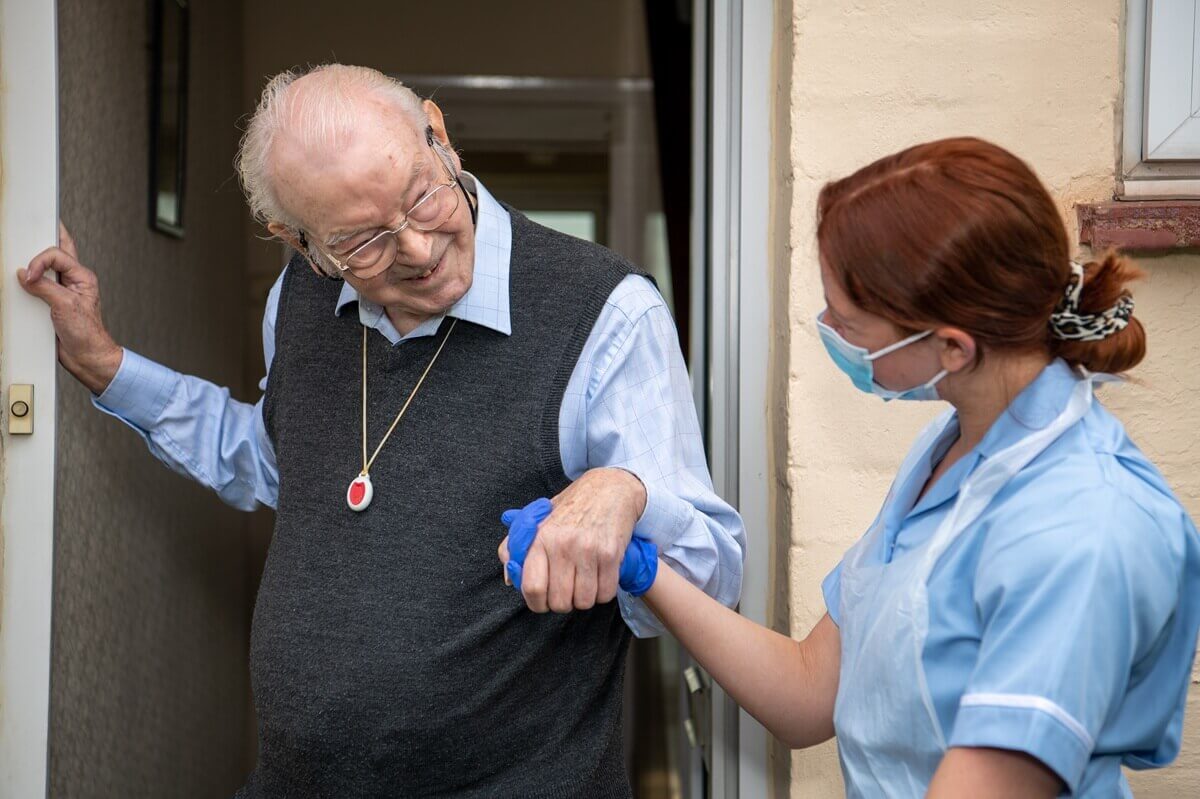
Diabetes is a common condition with around 4.3million people in the UK living with a diabetes diagnosis . The condition affects how the body regulates blood sugar (glucose) and there are several forms of it.
The two most common types of diabetes are type 1 and type 2. For people living with a diabetes diagnosis, around 8% have type 1 diabetes and 90% have type 2 .
Both types of the condition share some similarities but are fundamentally different in their causes, development and management.
In this article, we’ll explain the key differences between type 1 and type 2 diabetes and how aging can affect the condition.
What is type 1 diabetes?
Type 1 diabetes is an autoimmune condition. The body’s immune system mistakenly attacks and destroys the insulin-producing cells in the pancreas. Without insulin, glucose cannot enter cells to provide energy, so blood sugar levels rise.
The condition is typically diagnosed in individuals under 40 — most commonly in children, teenagers or young adults — but it can develop at any age.
When an individual does develop type 1 diabetes, it can appear suddenly and progresses quickly. The treatment requires lifelong insulin therapy, either by injection or pump.
What is type 2 diabetes?
Type 2 diabetes is the most common form, making up around 90% of diabetes cases. It develops gradually when:
- The body becomes resistant to insulin (it doesn’t use insulin effectively)
and/or
- The pancreas doesn’t produce enough insulin to keep blood sugar levels normal.
Risk factors include being overweight, having a family history of diabetes, being over 40 (over 25 for some ethnic groups) and living a less active lifestyle.
Unlike type 1 diabetes, type 2 can often be managed with lifestyle changes, medication or a combination of both. Some people may eventually need insulin.
Key differences between type 1 and type 2 diabetes
Although both type 1 and type 2 diabetes involve problems with insulin and blood sugar control, they are very different conditions. The main difference is that type 1 is an autoimmune condition where the body stops making insulin altogether, while type 2 develops gradually due to insulin resistance and reduced insulin production.
Here are some more of the main distinctions between the two types.
|
|
Type 1 Diabetes |
Type 2 Diabetes |
|
What causes it |
Autoimmune condition. Destroys insulin-producing cells |
Insulin resistance and/or reduced insulin production |
|
When it typically starts |
Often childhood or early adulthood. Sudden onset |
Usually adulthood. Gradual onset |
|
How common it is |
5–10% of diabetes cases |
Around 90% of diabetes cases |
|
How it’s treated |
Insulin injections or pump (lifelong) |
Lifestyle changes, tablets, sometimes insulin. |
|
Risk Factors |
Not linked to lifestyle. Family history and genetics can play a role |
Linked to weight, age, ethnicity, lifestyle and family history. |
|
Can it be prevented? |
No, it cannot be prevented |
In many cases, yes — through diet, exercise, and weight management |
How aging can affect diabetes
As people get older, the way their bodies handle blood sugar changes. This means older adults are at a higher risk of developing type 2 diabetes, and managing diabetes can become more complicated with age.
Here are some key factors to be aware of.
Slower metabolism
The body becomes less efficient at processing glucose as we age, which increases the risk of insulin resistance.
Changes in weight and activity levels
Our physical activity levels and muscle mass tend to decrease as we get older, which can contribute to higher blood sugar.
Other health conditions
Many older adults live with multiple conditions such as high blood pressure, heart disease or arthritis, which can make diabetes management more complex.
Medication interactions
Older adults may be taking several medications, some of which can affect blood sugar or interact with diabetes’ treatments.
Symptoms may be overlooked
Signs of high blood sugar (such as fatigue, confusion or frequent urination) can sometimes be mistaken for normal symptoms of the ageing process or attributed to other health issues. Because of this, diabetes can go undiagnosed for some older adults.
Increased complication risk
Diabetes can increase the likelihood of serious health problems such as heart disease, kidney issues and vision loss, which may already be concerns for older people.
Can type 2 diabetes become type 1?
No, someone with type 2 diabetes cannot develop type 1, or vice versa.
Type 1 and type 2 are separate diabetes conditions. One type cannot develop into the other.
However, type 2 can sometimes progress to the point where insulin injections are needed, which may make it look similar to type 1 — but the underlying cause is different.
In rare cases, adults may be diagnosed with a slower-developing form of diabetes called LADA (Latent Autoimmune Diabetes in Adults) , which can initially be mistaken for type 2.
What to do if you’re concerned about a loved one
If you think your loved one may be showing signs of diabetes, the first step is to encourage them to see their GP as soon as possible. Early diagnosis and treatment are vital for managing both type 1 and type 2 diabetes and for preventing serious complications.
How we can help
At Comfort Care At Home, we understand the unique challenges of living with diabetes in later life. Our care professionals can provide practical assistance with daily routines, gentle reminders around medication and meal preparation to meet dietary needs. We can also provide companionship and encouragement to help your loved one to maintain a positive lifestyle.
Contact us today to find out more about our home care services and the diabetes care and support we can offer your loved one as part of a tailored care plan.
Frequently asked questions
Can type 2 diabetes become type 1?
No, type 2 does not turn into type 1. However, type 2 diabetes can worsen over time, meaning insulin injections may eventually be needed.



